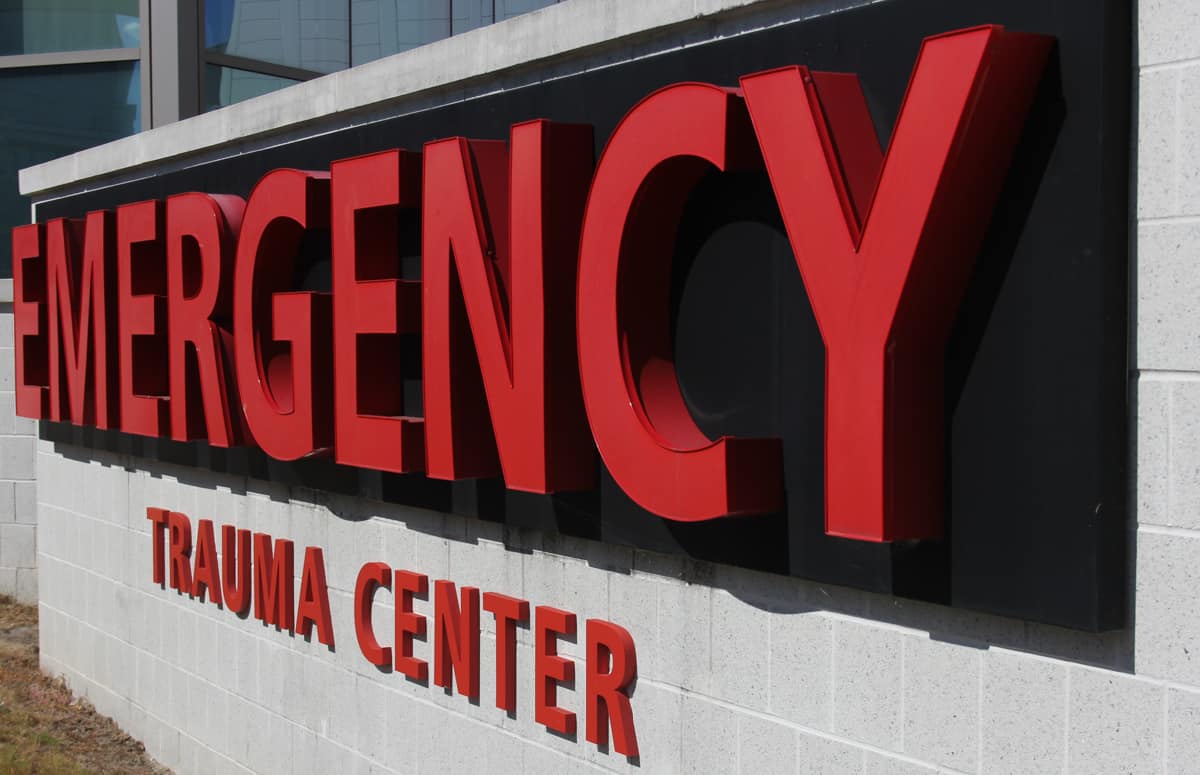Elective surgery cancelations in March and April were a blow that the state’s rural medical centers have yet to recover from. Regaining financial footing could take months, even if a second COVID wave never comes, hospital industry executives and advocates say.
By Liora Engel-Smith
The cancelation of elective surgeries in early spring left rural hospitals across the state nearly empty and without a major source of revenue. The implications of that financial blow are becoming clearer as health systems release financial disclosure documents from that period.
The state and federal government has funneled hundreds and thousands of dollars to hospitals, earmarking specific funds to the state’s roughly 50 rural hospitals. That support may have averted an immediate crisis, but rural hospitals are still not out of the woods, said Cody Hand, senior vice president of advocacy and policy at the North Carolina Healthcare Association.
“We weren’t confident before the pandemic hit that rural hospitals will make it another decade,” he said. “And so this [financial hardship] didn’t help.”
Signs of financial strain are everywhere in North Carolina’s rural hospital ecosystem. New data from the state health department shows that 31 rural and small hospitals received a grant of $84,317 apiece from federal funds that were allocated to the state for COVID relief. And 17 requested an early payment from NC Medicaid in June under an initiative that allows the state to essentially use the disbursements as short-term loans against future care.
Hospitals and skilled care nursing facilities across the state also got cash infusions in the form of Medicare loans, borrowing a collective $2.4 million, also against future care.
Yet rural hospitals continue to struggle, mainly because of their tenuous financial position even before the pandemic.
Loss on top of uncertainty
Nowhere is that financial distress clearer than in Eastern North Carolina, a largely rural part of the state with pockets of persistent poverty.
The biggest system there, Vidant Health, for instance, finished the nine-month period that ended June 30 $55.3 million in the red, for a negative operating margin of 3.8 percent, despite a round of layoffs in March. In May, Moody’s downgraded Vidant’s credit rating, citing the uncertainties of coronavirus in its decision.
But there were signs of strain at Vidant well before then, including a negative operating margin in the quarter before the pandemic began in North Carolina, and the closure of a mental health unit at a rural Vidant facility in Beaufort County.
When asked if the system will consider additional cuts to stay afloat, spokesperson Jason Lowry wrote that Vidant worked on improving its operational efficacy and cutting its spending to support the system in the future. Patients have begun to come back to the system, he later wrote, strengthening the system’s financial outlook.
“Vidant continues to carefully evaluate all services, programs and operations across the system to ensure we are able to meet our mission,” he wrote.
Another system, Southeastern Health, which serves Robeson and the surrounding counties, has had financial operating difficulties since Hurricane Matthew hit in 2017, incurring operating losses of roughly $50 million over two years with a margin of -8.4 percent in 2018 and -7.7 percent in 2019.
The coronavirus pandemic caused the system more than $11 million in losses in the nine-month period that ended June 30, even after the system eliminated more than 200 positions, shut down two primary care clinics and transferred operations of a third clinic to a local federally qualified health center.
By June, the system received more than $20 million in federal and state aid, according to its financial disclosure forms, much of it in the form of short-term loans that will soon be due, according to system leader Joann Anderson.
“We’re not going to totally recover to be where we need to be for probably another 12 months or so,” she said.
The exact timeline will depend on patients coming back, she said. In the early stages of the pandemic, many people delayed their care for fear of catching COVID, and not all of them have returned, she added.
North Carolina’s coronavirus curve is flattening from its peak in July, but some experts are predicting a second surge during flu season. Response to that second surge could include suspending elective surgeries yet again, a move that Anderson said would be “devastating” to Southeastern, and may require additional painful cuts.
A crisis in slow motion
Though all of North Carolina’s rural hospitals managed the financial uncertainties of early spring without closing their doors, future closures aren’t out of the question, said Brock Slabach, senior vice president for member services at the National Rural Health Association, an advocacy and research organization.
It’s a function of both uncertainties surrounding a possible second wave of coronavirus in the fall, but also the amount of aid hospitals might get from the federal government. On top of that, financial crises unfold slowly in the hospital world.
A February report by the Chartis Group, a healthcare service firm, examined the financial health of systems that closed their doors, finding signs of steady decline three years before hospitals went under. Hospitals in states that, like North Carolina, have not expanded Medicaid, were more financially vulnerable to begin with, the report noted.
“You can generally roll things along for a bit and keep things going and keep [a hospital] operating and then all of a sudden one day, it’s just impossible,” Slabach said.
Hand, from the N.C. Healthcare Association, said a few things could potentially alleviate the burden on rural hospitals and avert a crisis down the road. For one, he said, the Centers for Medicare and Medicaid Services could forgive the advance payments it made to rural hospitals at the height of the pandemic, or at least delay the repayment for a few more months. For another, he said, the state could disperse more of the CARES Act funds it received to support rural hospitals.
The state of North Carolina received $4.1 billion from the coronavirus fund, most of which went to the state, while roughly half a billion was issued to three counties and the city of Charlotte. Thus far, $3 billion has been allocated and $561 million remain in reserve until the General Assembly appropriates it, according to the State Office of Budget and Management. Roughly half the money that has been earmarked for spending has been disbursed, according to the office.
Amy Ellis, state health department spokesperson, said in an email that NCDHHS “is working with hospitals to operate in the new normal during and post COVID-19” and there are no additional funds for new financial initiatives to support rural hospitals. The department will continue to support rural hospitals through its existing programs, she added.



















